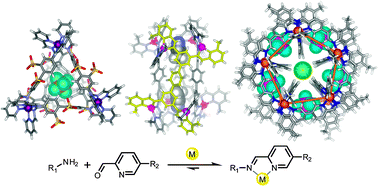Metal–organic container molecules through subcomponent self-assembly
Abstract
A variety of different three-dimensional metal–organic container molecules have recently been prepared using subcomponent self-assembly, which relies upon metal template effects to generate complex structures from simple molecular precursors and metal salts. Many of these structures have well defined internal pockets, allowing guest species to be bound and the chemical reactivity of these guests to be modified. Such host molecules have potential applications ranging from the protection of sensitive chemical species to the separation and purification of substrates as diverse as gases, gold compounds, and fullerenes.


 Please wait while we load your content...
Please wait while we load your content...